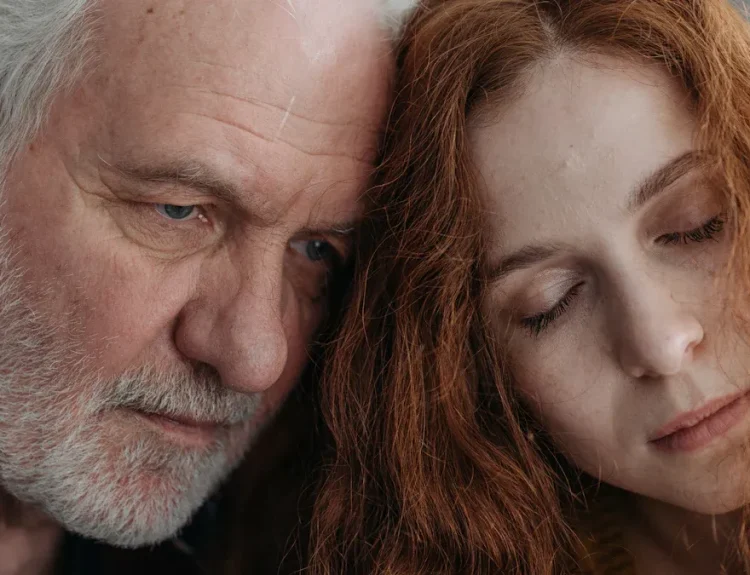Did you know that renowned relationship researcher Dr. John Gottman can predict the success or failure of a relationship with 94% accuracy within just three minutes of observing a couple’s conversation? When learning how to fix a broken relationship, understanding these subtle dynamics can make all the difference.

Most couples in long-term relationships will tell you they’ve experienced many “deaths and rebirths” over the years. This cycle is completely normal, but how we repair a broken relationship determines whether we grow stronger together or drift apart. Research shows that Emotionally Focused Therapy (EFT) has helped over 75% of couples improve their relationships.
However, love alone isn’t enough to save a relationship — despite what our culture heavily promotes. Many people get stuck in a cycle where one partner repeatedly apologizes without creating real change. This happens because genuine repair requires more than just saying “sorry” — it demands understanding, validation, and concrete behavioral changes.
In this guide, we’ll walk you through a proven approach to relationship repair that actually works. From identifying root causes to rebuilding trust and creating sustainable change, we’ll show you exactly what steps to take when your relationship needs healing.
Understand What Broke the Relationship
Before attempting to fix a broken relationship, you need to understand exactly what went wrong. Every relationship challenge has underlying causes that must be addressed for genuine repair to occur.
Identify the root causes of disconnection
Most relationships break down gradually rather than from a single catastrophic event. Research shows that couples experience a slow “drifting apart” without intentionally holding on to each other [1]. This natural drift often leads to emotional disconnection when not addressed.
The most common root causes include:
- Communication breakdown: Poor communication is cited as the number one cause of divorce in the United States [2]
- Unresolved emotional trauma: Painful experiences where people felt helpless can create patterned responses of emotional disconnection [1]
- Diverging interests: Differences in personality traits, values, or life goals create strain over time [3]
- Daily stressors: Work demands, financial pressures, and parenting disagreements slowly erode connection [1]
Differentiate between temporary issues and deeper patterns
Not all relationship problems signal the end. Consequently, it’s crucial to distinguish between normal rough patches and deeper issues.
A temporary rough patch usually manifests as tension related to external stressors like work or health—it’s a moment in time. In contrast, deeper issues appear as recurring conflicts that follow the same script without resolution [4].
Additionally, couples experiencing normal challenges still show signs of emotional connection—checking in, softening during conflict, or making space for repair. When these efforts disappear and blame or contempt takes over, you’re facing more than just a phase [4].
Reflect on your own role in the breakdown
Self-reflection is essential to relationship repair. For couples therapy to succeed, each partner must examine their own thoughts, feelings, and behaviors [5]. Furthermore, this process allows you to recognize your own contribution to the problems instead of solely blaming your partner.
During self-reflection, examine whether you’ve been emotionally present or disconnected. Many people disconnect from relationships as a survival response to past painful experiences [1]. Moreover, ask yourself if you’ve been taking responsibility or deflecting through defensiveness, which is one of four communication problems that frequently lead to divorce [2].
Through honest self-assessment, you gain clarity about what truly broke your relationship, enabling you to approach repair with greater wisdom and effectiveness.
Rebuild Trust Through Emotional Repair
Trust is the foundation of any healthy relationship, yet once broken, it requires more than casual promises to rebuild. Authentic repair involves addressing emotional wounds with intentionality and care.
Why apologies alone aren’t enough
Simply saying “I’m sorry” lifts the guilt of the person who caused harm without addressing the deep pain experienced by the wounded partner [6]. A sincere apology is merely the first tiny step in relationship healing—it opens the door to repair but doesn’t complete it [6]. Genuine apologies must include several key components:
- Acknowledging the damage caused to your partner
- Expressing authentic regret about your actions and their impact
- Providing reassurance about what you’ll do differently next time
- Asking for forgiveness, which requires vulnerability [7]
Without these elements, apologies remain hollow. Many people offer “vague apologies” that leave partners uncertain whether the offender truly understands what they did wrong [7]. Others give “blaming apologies” like “I’m sorry you feel that way,” which actually criticize the other person’s emotions rather than taking responsibility [7].
How to validate your partner’s pain
Emotional validation involves recognizing, understanding, and accepting your partner’s emotional experience without trying to fix, minimize, or judge it [5]. Although this might seem counterintuitive, when someone feels genuinely heard, something remarkable happens—they become less upset and more open to input [8].
To validate effectively, focus on listening to understand rather than responding [5]. Make eye contact, nod appropriately, and reflect what you’ve heard by restating their message [9]. Use phrases like “I can see how hard that would be” to convey empathy [5]. Notably, validation doesn’t mean you agree with their perspective—it’s about recognizing their feelings as real and meaningful [8].
The role of empathy in healing
Empathy—the capacity to understand and share another’s perspective and emotional state—is crucial for rebuilding damaged relationships [10]. It requires putting yourself directly into your partner’s place through a simple thought and feeling experiment [10].
Practical empathy involves focusing not on the situation itself, but on the feeling your partner experienced [11]. Since emotional wounds can linger for years, affecting relationships and overall well-being, empathy creates safety necessary for healing [1]. Furthermore, research shows that empathy strengthens relationships, increases cooperation, helps people forgive, and even improves physical health [11].
Ultimately, healing doesn’t need to be complete to improve your relationship quality—even modest progress enhances connection and creates the foundation for future growth [1].
Create a New Relationship Together
Repairing your relationship isn’t just about fixing what’s broken—it’s about creating something new and stronger together. Indeed, once trust has been broken, the old relationship cannot exist anymore [12].
Set new expectations and boundaries
Healthy boundaries serve as protection for your emotional well-being while strengthening your relationship. Setting clear expectations involves communicating directly about what you need from each other going forward. For instance, state boundaries firmly yet kindly: “I’d like more personal space” becomes “I need one hour of alone time daily to recharge.”
Meanwhile, remember that boundaries aren’t walls—they’re guidelines that define where your responsibilities end and your partner’s begin [13]. Effective boundaries require self-awareness about what you’re comfortable with and assertive communication to express these needs respectfully [14].
Develop shared goals and values
Identifying common interests forms the foundation of shared goals. Initially, explore each other’s values through honest conversations about what matters most to you both [15]. Subsequently, discuss long-term aspirations and identify areas of overlap to create specific, measurable objectives [15].
Use conflict as a tool for connection
Conflict signals a need for change and provides an opportunity to improve your relationship [16]. Embrace disagreements as catalysts for communication that lead to deeper understanding [17]. Above all, adopt a win-win mindset—asking “How can we get what we want?” rather than “How can I get what I want?” [18].
Consider couples therapy or coaching
Research shows couples therapy helps approximately 75% of couples improve their relationships significantly [3]. Furthermore, the average person receiving couple therapy is better off at termination than 70-80% of individuals not receiving treatment [19]. A trained therapist creates a safe space where you can learn to communicate effectively while feeling protected [3].
Sustain the Change Over Time
Maintaining positive changes in a relationship requires ongoing attention—much like tending a garden rather than simply planting seeds and walking away.
Practice emotional check-ins regularly
Scheduling dedicated time for relationship check-ins prevents small issues from growing into major problems. These brief conversations create spaces where both partners can honestly discuss what’s working and what isn’t [20]. Likewise, emotional check-ins allow you to take responsibility for your share in the relationship while helping both partners feel more secure, loved, and emotionally safe [20].
I recommend daily or weekly check-ins—even just 5-30 minutes can make all the difference [20]. During these conversations, first check inside yourself, then share your experience with your partner, and finally listen with caring attention to their perspective [21]. Successful couples don’t just spend time together; they create depth of connection through these intentional conversations [21].
Keep learning how to relate better
Consider your relationship as an ongoing class where both partners continue to grow and change [22]. Primarily, this learning process involves staying curious about each other rather than assuming you already know everything. Your partner will surprise you over time—sometimes delightfully, occasionally in challenging ways [22].
Approach each triumph and setback as an opportunity for learning [22]. In essence, relationships aren’t static; they evolve as you gain new insights and understandings [23]. This continuous learning helps you adapt to changing environments and communicate more effectively [23].
Build a support system around your relationship
No relationship exists in isolation. Hence, surrounding yourselves with supportive friends, family, or professional resources creates stability during difficult times. Set boundaries with people who drain your relationship energy while nurturing connections with those who respect your partnership [24].
First thing to remember is that healthy relationships need both internal support (between partners) and external resources. Listen without judgment, share feelings honestly, and ask for what you need [24]. Equally important, recognize how others influence your relationship—both positively and negatively [24].
Ultimately, these practices transform relationship repair from a one-time event into a sustainable lifestyle of connection.
Conclusion
Repairing a broken relationship demands more than just good intentions—it requires understanding, validation, and concrete actions. Throughout this guide, we’ve explored a comprehensive approach that actually works for couples willing to put in the effort.
First and foremost, identifying the root causes of disconnection allows you to address what truly broke the relationship rather than merely treating symptoms. Whether communication breakdown, unresolved trauma, or diverging interests caused the rift, self-reflection remains essential for both partners.
Trust, once broken, needs careful rebuilding through emotional repair. Accordingly, meaningful apologies paired with validation and empathy create the foundation for healing. Remember that saying “sorry” merely opens the door—the real work happens when you acknowledge the damage, express genuine regret, and commit to change.
Creating a new relationship together represents the next crucial step. You must establish fresh boundaries, develop shared goals, and transform conflict into a tool for deeper connection. Many couples benefit tremendously from professional guidance, with research showing that therapy helps approximately 75% of couples significantly improve their relationships.
Sustaining these positive changes over time ultimately determines your long-term success. Regular emotional check-ins, continuous learning about each other, and building a strong support network all contribute to lasting relationship health.
The journey of relationship repair certainly challenges even the most committed couples. However, each step you take toward understanding, trust, and connection strengthens your bond. Your relationship deserves this investment of time and energy—and so do you both as individuals.
Above all, remember that relationship healing isn’t a destination but a continuous process. When you commit to growth together, even the deepest wounds can heal, creating a partnership that’s not just repaired but genuinely transformed.









